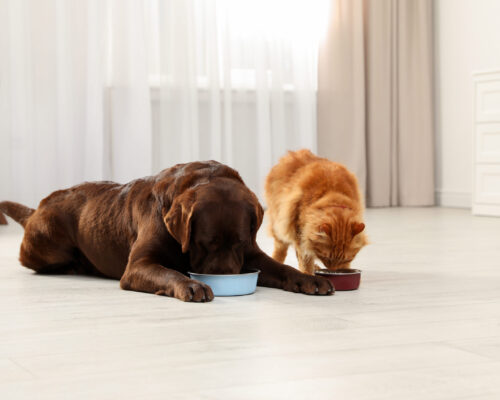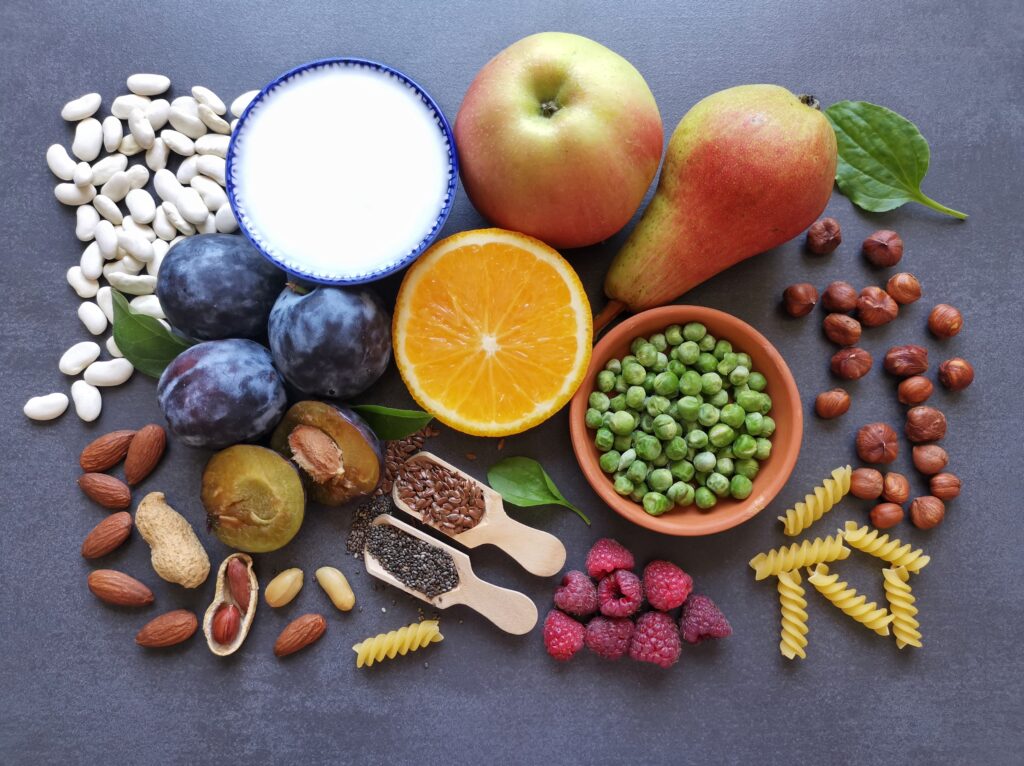Nutrition & the Microbiome
Microbes are busy creatures
When we eat, we’re not just feeding ourselves—we are nourishing an entire microscopic world within our intestinal tract. These gut microbes help digest food to produce energy and create beneficial byproducts that are essential for maintaining gut health. Nutrition is a pivotal factor that influences not only GI health in pets and humans, but overall well-being.

Diet also influences the variety of microbes that make up the microbiome, and the roles they play. Nutrients in food such as proteins, carbohydrates, and fats determine which bacteria thrive and how they function. In both pets and humans, adding prebiotic fiber is shown to change the way the gut microbiome processes nutrients, which leads to the production of beneficial metabolites (chemical byproducts) that can promote health benefits.
The more we learn about pets’ microbiomes, the more we should consider shifting how we talk about “healthy” pet foods. Pet parents often lean into protein as the nutrient that shows them how healthy a food is for their dog or cat. Emerging research is teaching us that we should also be mindful of other nutrients pets require, like prebiotic fibers. These fibers have been shown to be beneficial by nourishing the microbiome.
Microbes inhabit different regions of the intestinal tract based on the nutrients that are available in each region. For example, undigested resistant starch reaches the large intestine where specialized microbes ferment it into short-chain fatty acids, which have health benefits such as decreasing inflammation and helping immune function.
For instance, diets rich in certain fibers encourage the growth of beneficial bacteria that produce metabolites such as short-chain fatty acids (SCFAs), which are compounds linked to health benefits. SCFAs play significant roles, including:
Strengthening the gut barrier: Colonocytes (cells that make up the lining of the colon) use SCFAs as energy. When plenty of SCFAs are present, colonocytes form a healthier barrier which helps reduce the risk of infections and inflammation.
Anti-inflammatory and antioxidant effects: Dietary fiber can be transformed by microbes into SCFAs and other bioactive molecules, which can reduce chronic inflammation and protect cells from damage.

Prebiotics, probiotics, synbiotics and postbiotics: enhancing GI health through diet
As you can see, diet plays a crucial role in shaping our microbiome. To further support the microbiome we can consider incorporating prebiotics, probiotics, synbiotics and postbiotics into diets for humans and their pets. Understanding what each of these terms means can help us make informed decisions to enhance gut health and overall well-being.
- Prebiotics
Food ingredients like certain fibers that influence the growth or metabolism of specific—usually beneficial—bacteria. This typically has an indirect effect on host health as well, such as providing energy to the cells of the colon by the production of SCFAs or via beneficial polyphenols.
- Probiotics
Live beneficial bacteria introduced through diet or supplements to enhance gut health. Probiotics can support both digestive health and the immune system but are unlikely to take up residence in the GI tract of the animal that consumes them.
- Synbiotics
A synergistic combination of prebiotics and probiotics that work together to improve gut health.
- Postbiotics
Inactivated microorganisms and/or their cell components and metabolites that can provide health benefits to the host. Postbiotics can be supplemented directly to the diet to provide health benefits even though the relevant live microbes may not be present.
The role of nutrition in shaping the gut microbiome
The food that pet parents provide is the main source of nutrition for their pet and their pet’s microbiome. Compared to the varied diet of humans, a pet’s diet tends to be much more consistent. As a result, their community of microbes adapts to the steady availability of the same nutrients. Sudden dietary changes can change the composition and function of gut microbes, and might lead to issues such as GI discomfort.
On the other hand, research in humans and pets has shown that consistent consumption of specific nutrients may help mitigate signs of various health conditions. Veterinarians often use dietary changes as part of an overall treatment plan for diseases such as obesity, chronic kidney disease, food allergies, atopic dermatitis, and gastrointestinal disorders. In some cases, we know how certain diets impact microbial functions, so supplementing with certain probiotics or adjusting certain nutrients in the food can produce beneficial microbial metabolites. With further research, we can learn how to target the gut microbiome through tailored nutrition to improve health outcomes and enhance our pets’ quality of life.

